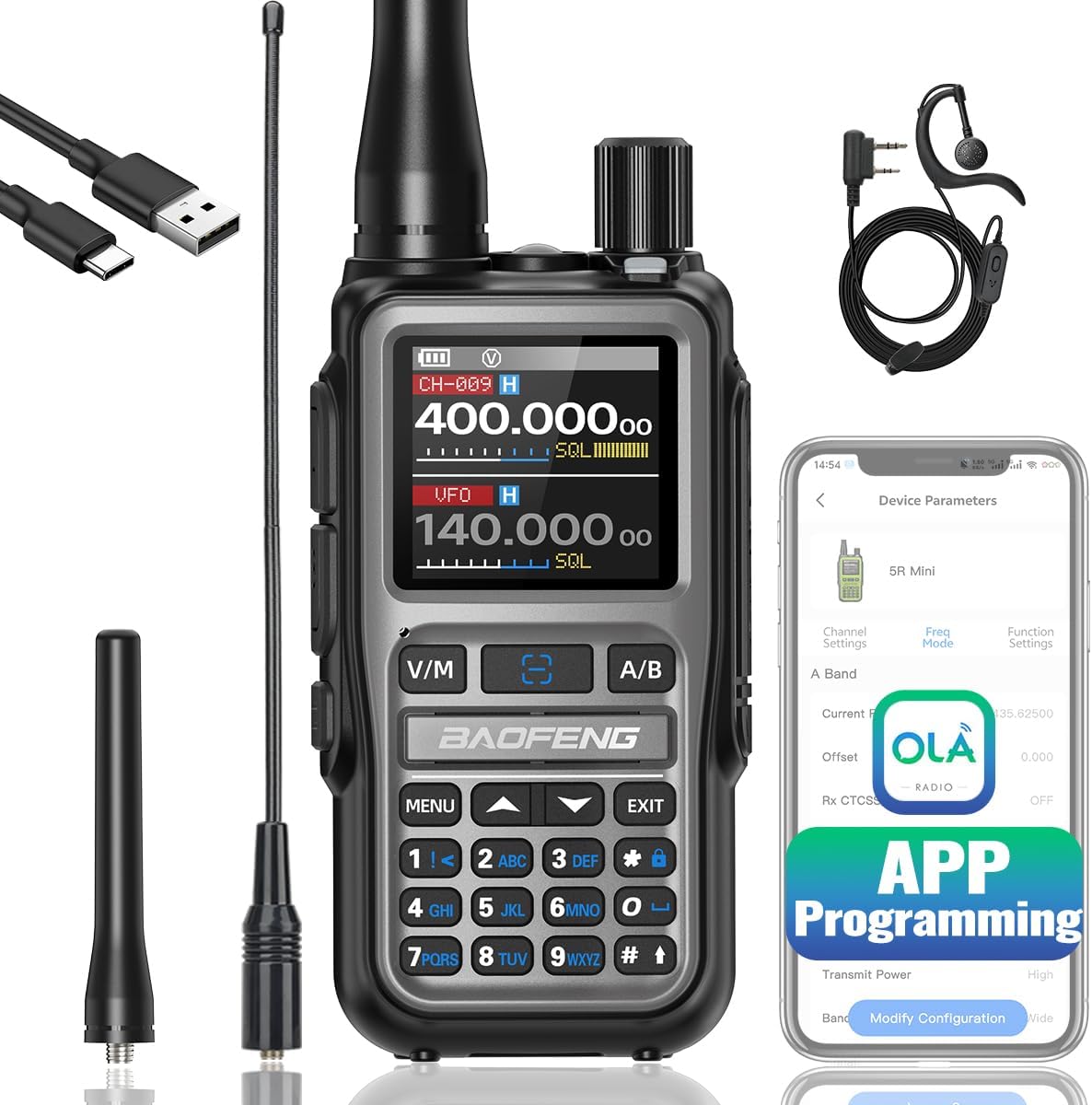
The Retevis RT95 is a dual-band mobile ham radio that has garnered attention for its robust performance, versatile features, and user-friendly design. Whether you’re a seasoned amateur radio operator or a newcomer, the RT95 presents a compelling option for reliable communication.
Design and Build Quality
The RT95 features a sleek, compact design that is both functional and aesthetically pleasing. Its dimensions make it suitable for installation in various vehicles, and it doesn’t dominate your dashboard or workspace. The radio is built with durable materials, ensuring it can withstand the rigors of outdoor use.
The front panel is equipped with a large LCD display that is bright and easy to read, even in low-light environments. The intuitive layout includes a variety of buttons that are clearly labeled, allowing for quick access to essential functions. The microphone is ergonomically designed, providing a comfortable grip during prolonged use.
Key Features
Dual-Band Operation: The RT95 operates on both VHF (136-174 MHz) and UHF (400-480 MHz) bands, providing flexibility for various communication needs. This dual-band capability allows users to connect with a wider range of stations.
Power Output: With a maximum power output of 20W, the RT95 offers impressive range and clarity. Users can select lower power settings (5W) for closer communications, optimizing battery life and reducing interference.
Digital Signal Processing (DSP): The integrated DSP enhances audio quality, reducing background noise and improving signal clarity. This is particularly beneficial in crowded frequency bands or during adverse weather conditions.
Built-in DTMF Keypad: The DTMF keypad allows for easy dialing of repeater access codes, making it user-friendly for operators who frequently switch between channels.
Memory Channels: The RT95 supports up to 128 programmable memory channels, allowing users to store their favorite frequencies for quick access. This feature is invaluable for users who regularly communicate on specific channels.
Emergency Features: The radio includes an emergency alarm function, which can be activated in critical situations. This feature can be a lifesaver for outdoor enthusiasts or those working in remote locations.
Scanning Functions: The RT95 offers various scanning capabilities, including memory channel scan and CTCSS/DCS scan. This enables users to monitor multiple channels efficiently and stay informed of ongoing communications.
Versatile Power Options: The RT95 can be powered via a standard vehicle power supply or an external AC adapter, providing flexibility for both mobile and stationary use.
Performance
In practical use, the Retevis RT95 performs admirably. The audio quality during transmission and reception is clear, with minimal distortion. Users have reported excellent signal strength and clarity, even at longer distances. The DSP contributes significantly to sound quality, making conversations more intelligible.
The dual-band functionality ensures that operators can switch between bands seamlessly, and the ability to program memory channels means that frequently used frequencies are readily available. The radio's scanning feature is particularly useful during busy communication periods, allowing users to stay connected without constantly adjusting settings.
User Experience
Setting up the RT95 is a straightforward process. The user manual, while comprehensive, may initially seem a bit overwhelming to newcomers, but most users will find the interface intuitive after a brief familiarization period. Programming channels and setting up features is relatively easy, although some advanced functions may require additional reading or online resources.
The radio’s microphone is well-designed, providing clear audio transmission without excessive strain. Users have noted that the ergonomic design helps reduce fatigue during long conversations.
Considerations
While the Retevis RT95 offers a host of features, there are a few considerations to keep in mind:
Learning Curve: Some users may find that the advanced features require a bit of a learning curve, particularly if they are new to ham radios. However, the user community and online forums can provide support.
Limited Customization: While the radio is versatile, advanced operators may find the customization options somewhat limited compared to higher-end models.
External Antenna: To maximize the radio’s potential, investing in a quality external antenna is recommended, especially for those operating in rural or challenging environments.
Conclusion
The Retevis RT95 ham radio is a solid choice for both amateur radio enthusiasts and professionals seeking a reliable mobile communication solution. Its combination of dual-band operation, powerful output, user-friendly interface, and robust build quality make it a versatile tool for a variety of applications.
Whether you’re using it for casual conversations, emergency communications, or outdoor adventures, the RT95 delivers excellent performance and value. For those seeking a dependable and feature-rich mobile ham radio, the Retevis RT95 is definitely worth considering.
Pros:
- Dual-band functionality (VHF/UHF)
- High power output (up to 20W)
- Excellent audio clarity with DSP
- User-friendly design and interface
- Large memory channel capacity
Cons:
- Some advanced features may have a learning curve
- Limited customization for experienced users
- Optimal performance may require an external antenna
Rating: ★★★★☆ (4.5/5)




